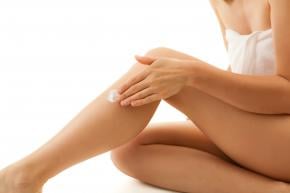Moisturising mechanisms
Water is indispensable for the good health of the skin.
Water follows a well-defined path in the different cutaneous layers, circulates in the blood right to the dermis, like a reservoir, then it spreads from the dermis to the epidermis to maintain cutaneous moisturisation. The natural moisturisation of the skin is the result of three biological mechanisms with specific functions.
Water is spread regularly and continually from the dermis to the surface of the skin.
At the level of the dermis, the body retains water through polymers, glycosaminoglycanes (GAGs). These polymers establish significant quantities of water and ensure the turgidity of tissues and the continued moisturisation of the skin.
It is then retained in the cells of the epidermis due to NMF* constituted of substances present in corneocytes, cells of the stratum corneum. Due to the substances which have a ‘reservoir’ effect, the skin is capable of finding water in the body and maintaining the level of moisturisation needed for its proper functioning. These substances act like a sponge to attract water and retain it in the interior of the corneocytes.
Finally, at the level of the stratum corneum, they evaporate: this is what is called Transepidermal Water Loss (TWL, constant, imperceptible loss of water at the level of the external layer of the skin).
● At the surface, this evaporation is controlled through lipids (oils) that cement the corneocytes and together form the permeable barrier of the skin (hydrolipidic film).
* Natural Moisturising Factor
Is your skin dry or dehydrated?
What is dehydrated skin?
Skin is dehydrated when the level of moisturisation falls below the minimum threshold (10%). Dehydrated skin lacks water, feels tight and presents fine streaks of moisturisation which might make the skin look grey. But dehydration is a condition: once the balance is re-established, the suppleness of the skin is restored and a normal level of moisturisation is attained.
What is dry skin?
Dry skin is characterised by small wrinkles, painful tightness, and a lack of suppleness and sensations of discomfort. It is more fragile and more sensitive. Dry skin is different from dehydrated skin, in that dry skin lacks more lipids. It is therefore necessary to remoisturise the upper layers of the epidermis but also to compensate for the lack of indispensable lipids to establish water in the stratum corneum.
There are two types of dry skin:
-
- Dry skin which truly and severely lacks water and lipids and requires specific moisturising treatment, for very dry skin with atopic tendencies
-
- Dry skin is rough, therefore moisturisation needs to be restored. It secretes less sebum, is wrinkly and can peel

